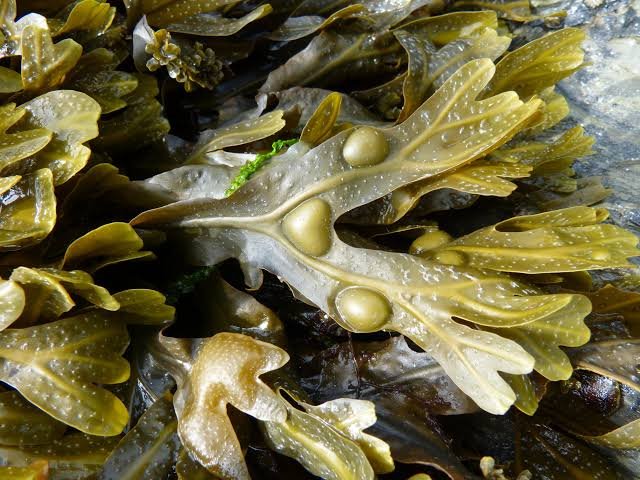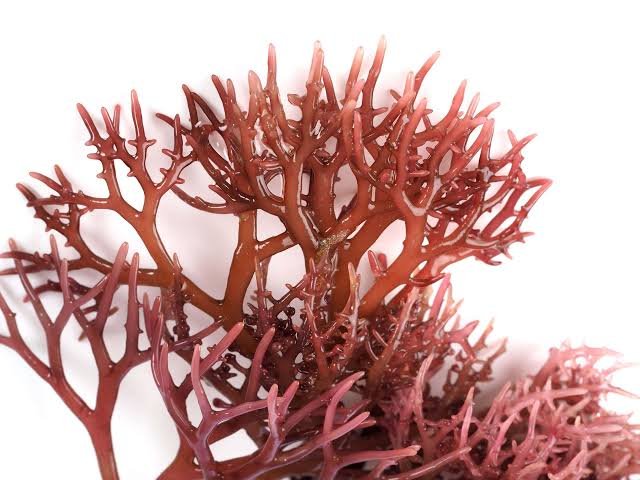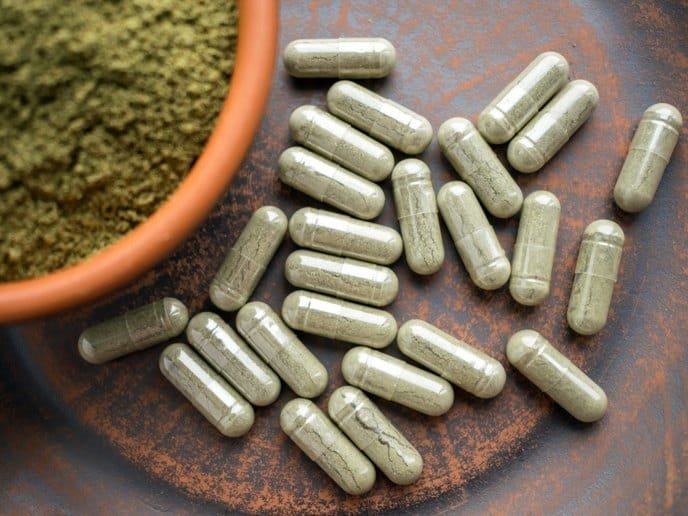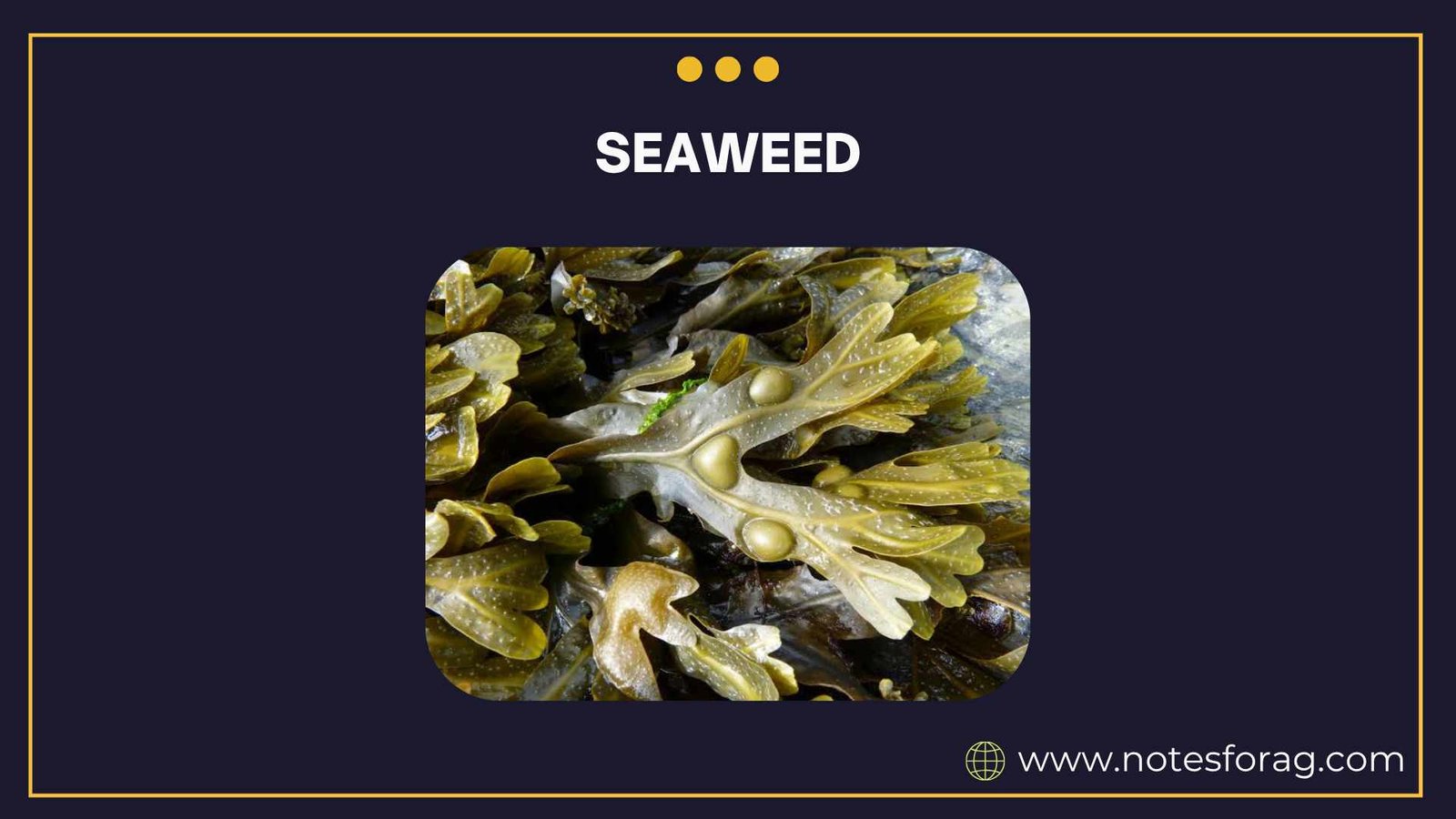Introduction
Seaweed refers to a wide variety of marine plants and algae that grow in oceans, seas, and other water bodies. It has been used for centuries in food, agriculture, medicine, and industry due to its high nutritional value and ecological importance. Seaweeds are found mostly along rocky shorelines and come in various colors such as green, brown, and red, each with unique properties and uses.
Summary of Seaweed
- Seaweed is a diverse group of marine algae rich in nutrients and widely used in agriculture, food, and pharmaceuticals.
- It plays a key role in sustainable farming as a biofertilizer, promoting plant growth and improving soil health.
- Seaweed cultivation also supports marine ecosystems and offers economic benefits to coastal communities.

Table of Contents
Types of Seaweed
1. Green Seaweed (Chlorophyta)
Green seaweed is commonly found in shallow waters and contains high levels of chlorophyll. It is rich in nutrients like calcium and magnesium and is often used in salads, soups, and as animal feed.
2. Brown Seaweed (Phaeophyceae)
Brown seaweed, such as kelp, grows in cooler waters and is high in iodine, alginate, and other minerals. It is commonly used in fertilizers, cosmetics, and food products.
3. Red Seaweed (Rhodophyta)

Red seaweed grows in deeper waters and contains valuable compounds like carrageenan and agar, which are widely used as gelling agents in the food and pharmaceutical industries.
Nutritional Value of Seaweed
Seaweed is considered a superfood due to its rich nutritional content. It contains proteins, fiber, vitamins A, C, E, and K, iodine, iron, and antioxidants. Regular consumption supports thyroid function, boosts immunity, and promotes healthy skin and hair.
Uses of Seaweed
1. As Human Food
Seaweed is widely used in Asian cuisines, especially in Japan, Korea, and China. It is consumed in various forms such as sushi wraps (nori), soups, snacks, and salads. Its umami flavor enhances food taste and nutritional quality.
2. In Agriculture
Seaweed extracts are used in biofertilizers and plant growth stimulants. They improve soil structure, enhance nutrient absorption, and increase crop yields naturally.
3. In Medicine

Seaweed is a source of bioactive compounds with antibacterial, antiviral, and anti-inflammatory properties. It is used in traditional medicine and research for treatments related to obesity, cancer, and cardiovascular diseases.
4. In Industry
Seaweed is used to produce various industrial products including agar, carrageenan, and alginate which are used in food processing, textiles, cosmetics, and pharmaceuticals.
5. As Animal Feed
Seaweed meal is added to livestock and aquaculture feed to improve animal health, weight gain, and disease resistance.
Seaweed Farming
Seaweed farming, also known as mariculture, is a sustainable practice gaining popularity worldwide. It requires minimal resources and provides significant environmental benefits. Farming techniques include:
1. Raft Culture
Seaweed is attached to floating ropes or nets suspended in water. It allows easy harvesting and is ideal for large-scale production.
2. Long-Line Culture
This method involves stretching long ropes horizontally in water, allowing seaweed to grow vertically. It is widely used for farming kelp.
3. Net Culture
Fine mesh nets are used to cultivate smaller seaweed species. This method is common in coastal and estuarine regions.
Environmental Benefits of Seaweed
1. Carbon Sequestration
Seaweed absorbs carbon dioxide from the atmosphere, helping to mitigate climate change by reducing greenhouse gases.
2. Oxygen Production
Through photosynthesis, seaweed releases oxygen, supporting marine ecosystems and aquatic life.
3. Coastal Protection
Seaweed beds help in stabilizing shorelines, reducing erosion, and protecting coastal communities from wave damage.
4. Marine Habitat
Seaweed provides shelter and breeding grounds for marine species such as fish, crustaceans, and mollusks.
Challenges in Seaweed Utilization
1. Harvesting Limitations
Manual harvesting is labor-intensive and time-consuming. Mechanical harvesting can damage marine habitats.
2. Quality Control
Variations in species and growing conditions affect the consistency and safety of seaweed products.
3. Pollution Risks
Seaweed grown in polluted waters may accumulate heavy metals, which can be harmful to humans and animals.
4. Market Access
Lack of infrastructure and market linkages in developing countries limits seaweed trade and farmer profits.
Future Prospects of Seaweed
The demand for seaweed is increasing due to its versatility and environmental benefits. Innovations in cultivation, processing, and product development are expanding its applications. With proper policy support and awareness, seaweed can contribute significantly to sustainable food systems and economic development.
Conclusion
Seaweed is emerging as one of the most sustainable and versatile marine resources available today. Its applications span across industries from food and agriculture to medicine and cosmetics. In terms of environmental benefits, seaweed plays a significant role in reducing ocean acidity, improving water quality, and sequestering carbon, making it a key player in combating climate change. Nutritionally, seaweeds offer a rich source of essential vitamins, minerals, and antioxidants that contribute to human health and wellness. The cultivation of seaweed provides coastal communities with a renewable source of income and an opportunity to engage in sustainable aquaculture practices.
Despite challenges such as market instability, disease issues, and environmental concerns, advancements in seaweed farming technology and growing awareness of its benefits are opening up new opportunities. With supportive government policies, increased research, and community involvement, seaweed farming holds the potential to transform coastal economies, enhance global food security, and protect the environment. Promoting responsible seaweed cultivation and harvesting practices can ensure its benefits are realized without compromising marine biodiversity. In the years to come, seaweed is likely to become an even more vital component of the global green economy.
Frequently Asked Questions (FAQs)
What are the benefits of seaweed for plants?
Seaweed is very helpful for plants because it works like a natural fertilizer. It helps plants grow faster and stronger by giving them important minerals and plant hormones. It also makes the soil better, so plants can absorb nutrients more easily. Another benefit is that it helps protect plants from pests and diseases, which means farmers can use fewer chemicals.
Is seaweed good for organic farming?
Yes, seaweed is excellent for organic farming. It comes from nature and does not contain any harmful chemicals, so it fits perfectly into organic practices. Farmers use it as a biofertilizer and soil conditioner to increase crop production in a natural way. Seaweed helps make the soil healthy and supports better plant growth, all without damaging the environment.
Can seaweed be used directly in gardens?
Yes, you can use seaweed directly in your garden. You can apply fresh seaweed or dried seaweed around the base of plants like mulch. As it breaks down, it adds nutrients to the soil and helps it hold more moisture. This means your plants stay healthier and you don’t need to water them as often. Seaweed also helps keep the soil soft and loose.
What nutrients are found in seaweed?
Seaweed contains many important nutrients that help plants grow. These include nitrogen, phosphorus, and potassium the same nutrients found in many fertilizers. It also has calcium, magnesium, and trace minerals that keep plants strong. Seaweed also contains natural plant growth hormones, like cytokinins and auxins, which support faster root development and help plants grow better.
Related Articles

